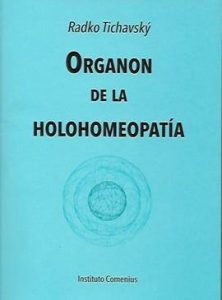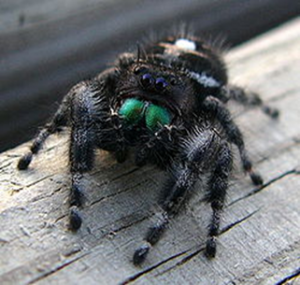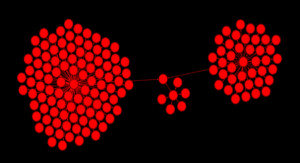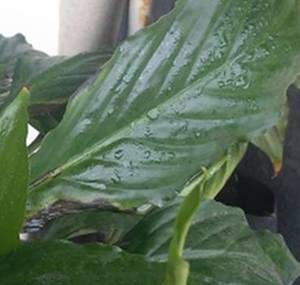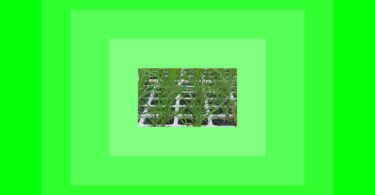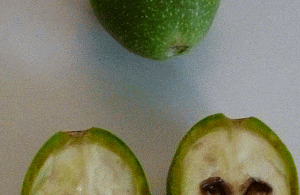Radko Tichavsky is a Czech born Mexican Agrohomeopath. He is a co-founder and director of Instituto Comenius in Mexico and author of Handbook of Agrohomeopathy, 2007 (Spanish) and Homeopathy for Plants, 2009 (Spanish) and creator and teacher of Holohomeopathy.
Agrohomeopathy Course!
Radko Tichavskyi is now offering a one semester virtual course in Agrohomeopathy (in English). You can learn how to define and analyze holons and how to repertorize the specific homeopathic treatment beyond just disease or pest names. You can find out more here: www.icomenius.edu.mx
Organon de la Holohomeopatía – Six years in the making, it is the latest book by Radko Tichavsky, researcher on the application of homeopathy in agriculture. This Spanish language book covers homeopathic interventions in agriculture from the holistic view, allowing greater certainty in repertorizations. It addresses a novel concept of metabolic similarity, not only among plants, but also among different species of the animal and plant kingdom.It studies the formation and dynamics of attractors, areas of greater vitality within the holons and coexistence units of different living organisms. Holohomeopathy is a fascinating contribution to the application of homeopathy to plants. It allows one to discover a universe of surprising relations in vital dynamism. It puts into the hands of the agricultural producer a valuable tool for the successful handling of pests and diseases in crops of any size. For ordering or information: [email protected]
Dear Sir,
I am from India. My cotton plants are suffering pink bollworm (Pectinophora gossypiella). Which remedy or process can help to get rid of them? Kindly also let me know what potency to use.
Thank you
Dipak Patil
Radko Tichavsky:
Dear Dipac,
For proper control of Pectinophora gossypiella you can make homeopathic preparations yourself, using Phidippus audax, a small spider from the family Salticidae also popularly known as “jumping spiders”. In fact, do not worry if you do not find Phidippus audax specifically, another species of “jumping spider” native in your holon will be indicated. Observe carefully in your crop and if you have not applied insecticides
Phidippus audax
on your cotton you will surely find some of these spiders. Capture a spider and prepare mother tincture (TM) by placing it in a bottle with a little of 30% ethyl alcohol (can be vodka for example). After letting the TM mature for a week, take out a drop of TM, put in a separate clean bottle and add 99 drops of alcohol, make 100 vigorous succussions. This will result in Phidippus audax 1 CH. Each drop equals 0.05 ml of liquid volume, then in your bottle you will have 5 ml of fluid in total. Then pour this content into another one-liter bottle and add water in a 1: 100 ratio, ie 5 ml of 1 CH and 495 ml of water and make another 100 vigorous succussions, resulting in 0.5 liters of 2 CH. Then pour the preparation 2 CH into a container with 49.5 liters of water and perform 100 turns on one side and 100 vigorous turns on the other side with a wooden stick, resulting in 50 liters of Phidippus audax 3 CH. Add 0.5 l of sap of prickly pear (Opuntia ficus indica) and apply as a spray in your crop. If the quantity is insufficient, you can repeat the dynamization process once again by placing 50 liters of the 3 CH remedy in a 5000 liter container with water and in this case you will add 5 liters of prickly pear sap (Opuntia ficus indica) as coadyuvant.
Phidippus audax semiochemicals will attract a large number of beneficial insects to your crop, including some wasp parasitoids, and in conjunction with them will be responsible for controlling the pest. To give you an idea, this little spider emits a biochemical signal in the form of a cuelure (4- (p-Acetoxyphenyl) -butan-2-one) that attracts, alone, the impressive figure of more than 330 different insects to the holon.
Last advice, avoid in the vicinity of the cotton plantations the species of plants belonging to the Malvaceae family, especially Hibiscus tilieaceus and Thespecia populnea, which are primary hosts of Pectinophora gossypiella attracted by its secondary metabolites, facilitating its secondary lodging in the cotton plantations.
Hi Radko,
I’ve discovered a tree borer in my Australian native grevillea tree. Many of the leaves are yellow and have brown tips, and there have been no flowers for several months. I pruned branches to remove areas of the borer’s ‘sawdust’. The tree now stands about 1.3 metres high (approx 4 feet), by about the same width and still has enough healthy looking foliage on it to grow back. I have found information online that recommends using homeopathic Thuja but I’m not sure how much or how often to apply it. I’m in the middle of eastern Australia with a moderate climate where I live, and spring is almost upon us. The east side of Australia is still experiencing a prolonged drought, and I think this has contributed to reduced immunity in my tree.
Thank you
Rhonda
Radko Tichavsky:
Dear Rhonda,
Grevillea sp. is a specie quite resistant to drought but as you say correctly the weakened tree is susceptible to different pests including Lyctus sp., marine borers and pinhole borer (Megaplatypus australis). These conditions occur preferably in trees outside the coexistence with the natural complementary species and in conditions of very dry soil.
As far as the indicated remedy is concerned, the suggestion to apply Thuya occidentalis is the result of the europocentrism of some agrohomeopathic repertoires. The best remedies indicated in this case are of course the remedies prepared from the existing species in the same holon. You can see that the Grevillea sp. in the wild coexists frequently and spontaneously with Castanospermum australe, Casuarina cunninghamiana and Araucaria cunninghamii, three different Australian trees, which indicates a metabolic similarity and interspecies collaboration. Especially Casuarina cunninghamiana 12 CH is the homeopathic remedy indicated in this case, the mother tincture is prepared in ethanol and from the bark of the tree.
Castanospermum australe also contains powerful metabolites against coleopteras in the bark such as bayogenin, castanospermine, formononetin and afrormosin. In addition to pesticides there are also potent fungicides, but at the same time it attracts the beneficial insect species that take the place of pathogens such as Megaplatypus australis and decrease the possibility that the borers collaborate with fungi to decrease the effectiveness of the tree’s defenses.
As you can see, it is not enough to think about how to eliminate a single pathogen, but it is always necessary to take into account the totality of symptoms and replace a whole cluster of pathogenic organisms with another balanced cluster. Since the disappearance of a single species from the cluster would only have a temporary and palliative effect.
Here you can see the interaction graph of Megaplatypus australis, where each node expresses a participating species and the edges visualize a metabolic similarity between them that unites them. In this case, the Megaplatypus australis vital cluster is composed of 148 participating organisms (this number does not include plant species that complement the insect clusters ) clearly grouped by similarity in three sub-clusters. By suppressing a single organism (one of the nodes) or even a single complete sub-cluster, it would be “restituted” by the remaining participating members, due to its strong biochemical links. In this way we must always take into account local species in the development of homeopathic remedies because they are properly linked to local organisms and are not directed selectively against a single group as would happen with the use of Thuya occidentalis, native plant in the American continent and exotic or introduced in Australia. The native species with a high degree of metabolic similarity applied as homeopathic remedies help to cover the totality of the symptoms, as it is indicated in the Organon of medicine, and thus achieve a complete cure.
Dear Mr. Tichavsky,
My peach and cherry trees show bark lesions which exude an amber gummy substance. I have read that this is called Gummosis and is caused by Botryosphaeria dothidea, a fungus. Our cherry trees are old and have been infected for years. Our white peach tree is about 4 years old. I just noticed the gumming this summer – it is half way up the trunk by now.
Also, our pear tree has Pear Rust – red spots the size of a thumb nail which have a raised, rough aspect on the underside of the leaf. Last year I raked up as many infected leaves as possible and treated with Thuja. The number of infected leaves are fewer this year. I wonder if I should re apply Thuja or another remedy?
I live in northern Delaware – New Castle, DE 19720. Last winter was very cold with temps ranging below 20 F. This summer has been wet and hot except for a hot dry period for 3 weeks in July. Do you have any suggestions?
Thank you
Barbara Bason [email protected]
Radko Tichavsky:
Dear Barbara,
Many growers have the idea that they should eliminate Botryosphaeria dothydea with antifungal remedies (such as Thuya occidentalis for example), but the effect is usually only temporary and the problem becomes chronic, typical for suppression through action of the contrary remedies (even made by some incorrectly applied homeopathic remedies).
The fungus in question is identified as a pathogen, but sometimes it is also endophyt, that is, it coexists inside the plant without causing any symptoms. The difference clearly marks the vitality of the trees and the holon. The means of dispersal of this fungus is air and rain and the entry points are the lenticels (they are used for the exchange of gases to replace the stomas in the bark) and secondly there are the wounds caused during the pruning.
The first action should be directed towards the correct healing of branch cuts in the fall with a mixture of natural bee’s wax, pine resin and turpentine. Application of Boswellia sacra resinae (homeopathic remedy made from the resin of Boswellia sacra, used in church incense) by spraying at potency 4 CH is the way to protect the lenticels from the entrance of conidia and ascospores, two ways of propagation of the fungus. The conidia are transported by air and the ascospores with water or air. It is impossible to eliminate completly the Botryosphaeria dothydea, but it is possible to learn to live with it, for example by means of entry barriers that decrease reinfection, on the one hand and revitalizing the trees on the other side.
The key remedies for this cryptogamic condition are definitely not found among the plants, but between lichens: Parmelia spp., Ramalina spp. and Pertusaria spp.
In your region you can find the following Parmelia species: Parmelia furfuracea, Parmelia neodiscordans, Parmelia squarrosa, Parmelia sulcata, Parmelina quercina, also Ramalina spp: Ramalina americana, Ramalina fraxinea, and Pertusaria spp .: Pertusaria pertusa and Pertusaria plittiana Indicated remedies in this case are Parmelina quercina, Ramalina americana and Pertusaria pertusa. The remedies have to be sprayed in the same application in the form of a homeopathic multi-composed remedy at the potency 12 CH, in the period after the leaf fall and after pruning, and in early spring repeat the application, always with sunflower oil (Helianthus annuus) as an adjuvant.
Dear Mr. Tichavsky
The edges of many leaves of my potted plant Spathiphyllum have yellow spots surrounded by extensive black (photo below). What could cause this?
Thank you
Roberto Migliorelli – Rome
Radko Tichavsky:
Dear Roberto,
It is a fungus, probably caused by too abundant watering. The plant in the image seems to be affected by the Phytopthora parasitica in combination with other opportunistic fungi such as Colletotrychum sp, Cladosporium sp., Fusarium sp., or Phoma sp. You can apply a very small quantity of a very fine spray of Arsenicum album 12 CH and Carbo vegetabilis 12 CH alternated every three days. The affected leaves must be cut from the base with a knife previously cleaned with alcohol and passed through a flame.


